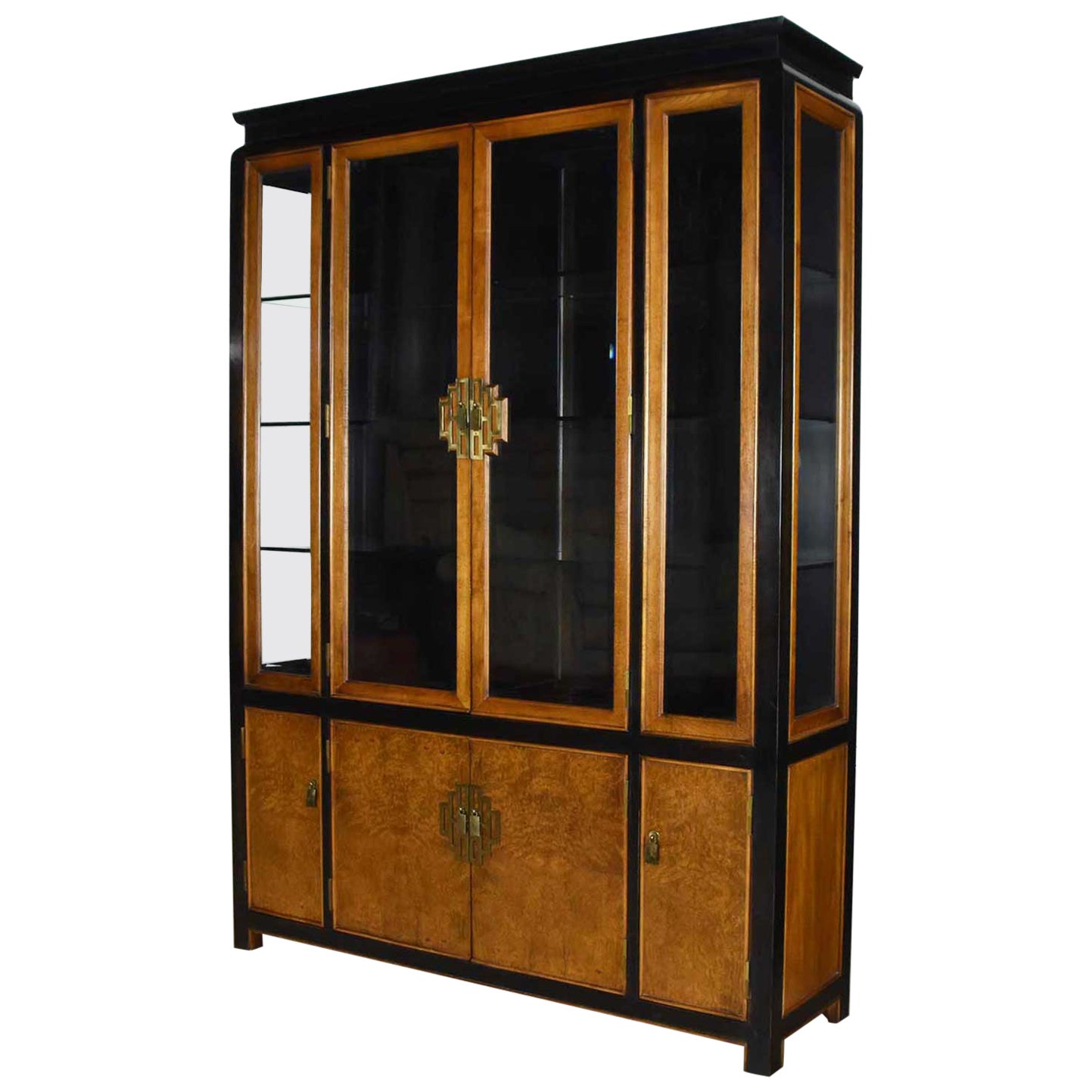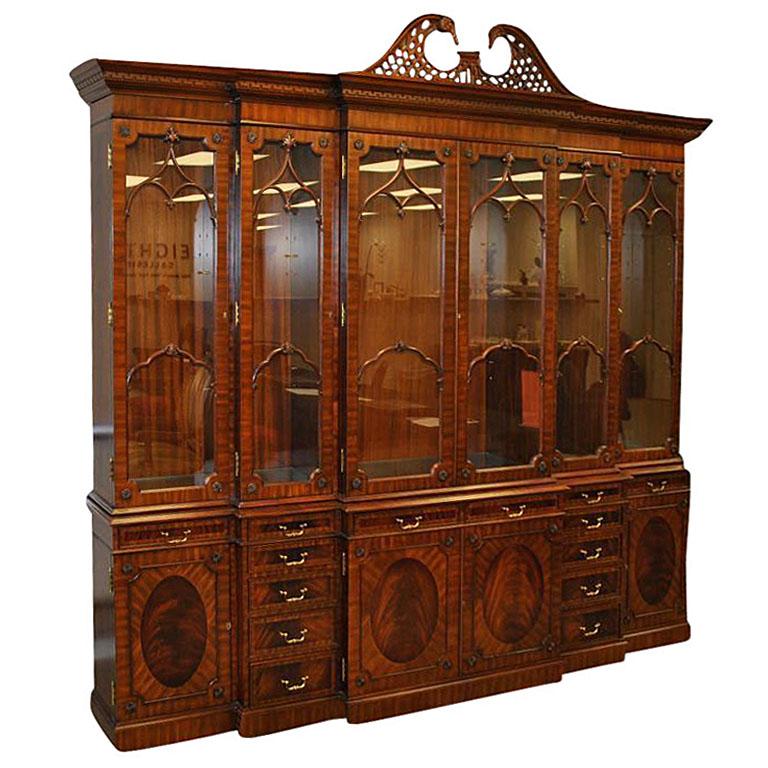The Allure of Vintage Walnut China Cabinets

Vintage walnut china cabinets are more than just furniture; they are time capsules, reflecting the craftsmanship and design sensibilities of bygone eras. Their warm, rich hues and intricate details speak to a history of artistry and functionality that continues to captivate collectors and enthusiasts today.
The Enduring Appeal of Walnut Wood
Walnut wood has been a favored material in furniture making for centuries, prized for its strength, durability, and distinctive beauty. Its rich, dark brown color, often with intricate grain patterns, adds a touch of elegance and sophistication to any space. The inherent durability of walnut wood ensures that vintage china cabinets crafted from this material can withstand the test of time, becoming cherished heirlooms passed down through generations.
Identifying and Evaluating Vintage Walnut China Cabinets

Identifying and evaluating vintage walnut china cabinets requires a keen eye for detail and a solid understanding of the nuances that distinguish these pieces. This guide provides insights into key characteristics, common makers, and factors that influence value.
Wood Grain Patterns and Construction Techniques
Walnut wood is renowned for its rich, intricate grain patterns that vary significantly depending on the tree’s age, growth conditions, and region of origin. Identifying specific patterns helps authenticate the cabinet’s origin and age.
- Quarter-sawn walnut exhibits a distinctive, straight, and consistent grain pattern with prominent rays, often resembling a flame or ribbon. It is prized for its durability and stability.
- Plain-sawn walnut displays a more irregular grain pattern with wider, bolder figures, often featuring swirls, knots, and burls. It is known for its warmth and character.
- Construction Techniques: Examining the cabinet’s construction reveals craftsmanship and quality. Look for dovetail joints, mortise and tenon joints, and hand-cut details. These indicate skilled craftsmanship and a higher value.
Common Makers and Brands
Several makers and brands are associated with vintage walnut china cabinets. Their history and reputation influence the value of their pieces.
- Herschede Hall Clock Company: Established in 1853, Herschede was known for its high-quality furniture, including walnut china cabinets. Their pieces are often characterized by intricate carvings, elegant designs, and durable construction.
- The Pennsylvania House Furniture Company: Founded in 1903, The Pennsylvania House Furniture Company produced a wide range of furniture, including walnut china cabinets. Their pieces are known for their classic designs and quality craftsmanship.
- The American Furniture Company: Established in 1905, The American Furniture Company was known for its high-quality furniture, including walnut china cabinets. Their pieces are often characterized by intricate carvings, elegant designs, and durable construction.
Factors Influencing Value
The value of vintage walnut china cabinets is influenced by several factors.
- Condition: A cabinet in excellent condition, with minimal wear and tear, commands a higher price.
- Rarity: Limited edition or unique pieces with distinctive features, such as intricate carvings or unusual designs, are more valuable.
- Provenance: Knowing the history and origin of the cabinet, including the maker and any notable owners, can significantly increase its value.
Restoring and Maintaining Vintage Walnut China Cabinets

Restoring a vintage walnut china cabinet not only preserves its beauty but also extends its lifespan, ensuring it remains a cherished heirloom for generations to come. This process involves careful cleaning, refinishing, and repair, all aimed at bringing back the cabinet’s original glory. Maintaining its integrity requires using appropriate cleaning and preservation methods to protect its finish and structure.
Cleaning and Refinishing Vintage Walnut China Cabinets
Cleaning a vintage walnut china cabinet requires a gentle approach to avoid damaging its delicate finish. The following steps Artikel a safe and effective cleaning process:
- Dusting: Begin by dusting the cabinet thoroughly using a soft, dry cloth or a feather duster to remove loose dirt and debris. Avoid using abrasive cloths or harsh chemicals that can scratch the surface.
- Cleaning: For deeper cleaning, mix a mild soap solution with warm water. Dip a soft cloth into the solution and gently wipe the cabinet’s surface. Rinse the cloth frequently and avoid soaking the wood.
- Drying: After cleaning, immediately dry the cabinet with a clean, soft cloth to prevent watermarks from forming. Allow the cabinet to air dry completely before applying any polish or wax.
Refinishing a vintage walnut china cabinet involves removing old layers of finish and applying a new coat to restore its shine and protect the wood. This process typically involves the following steps:
- Stripping: Use a chemical stripper designed for wood to remove the old finish. Apply the stripper according to the manufacturer’s instructions and wear appropriate safety gear.
- Sanding: After stripping, sand the cabinet using progressively finer grit sandpaper to smooth the surface and remove any remaining residue. Start with a coarser grit and gradually work your way to a finer grit.
- Finishing: Apply a new finish to the cabinet, such as a varnish, polyurethane, or oil-based finish. Choose a finish that matches the original style and provides the desired level of protection.
Repairing Damaged Areas
Damaged areas on a vintage walnut china cabinet can be repaired to restore its structural integrity and aesthetic appeal. Common repairs include fixing cracks, scratches, and loose joints.
- Cracks and Scratches: Small cracks and scratches can be filled with wood filler. Choose a filler that matches the color of the wood and apply it according to the manufacturer’s instructions. Once dry, sand the filler smooth and refinish the area.
- Loose Joints: Loose joints can be tightened using wood glue or epoxy. Apply the adhesive according to the manufacturer’s instructions and clamp the joint until it dries.
Maintaining the Integrity of Vintage Walnut China Cabinets
Maintaining the integrity of a vintage walnut china cabinet involves protecting its finish and structure from damage. This can be achieved through the following measures:
- Regular Cleaning: Dust the cabinet regularly to prevent the accumulation of dirt and debris that can scratch the finish. Avoid using harsh chemicals or abrasive cleaners.
- Protecting from Sunlight: Direct sunlight can fade the finish and damage the wood. Place the cabinet in a location that receives indirect sunlight or use a UV-protective film to shield it from harmful rays.
- Avoiding Moisture: Moisture can cause warping, cracking, and mold growth. Keep the cabinet away from sources of moisture, such as bathrooms and kitchens.
Just as a vintage walnut china cabinet holds cherished family heirlooms and memories, so too does a well-organized bathroom, like one with a target bathroom medicine cabinet , reflect a sense of order and peace. Both serve as vessels for the things we hold dear, reminding us of the beauty and value found in both the past and present.
A vintage walnut china cabinet, with its rich patina and intricate carvings, whispers tales of bygone eras. Its presence evokes a sense of history, of family gatherings, and of cherished memories. The warmth of the walnut wood, like a comforting embrace, invites us to slow down and appreciate the beauty of the past.
Just as the distressed wood kitchen cabinets, distressed wood kitchen cabinets , add a touch of rustic charm to modern homes, so too does the vintage walnut china cabinet bring a timeless elegance to any space. It reminds us that beauty can be found in the imperfections, in the stories etched into the wood, and in the enduring spirit of craftsmanship.
